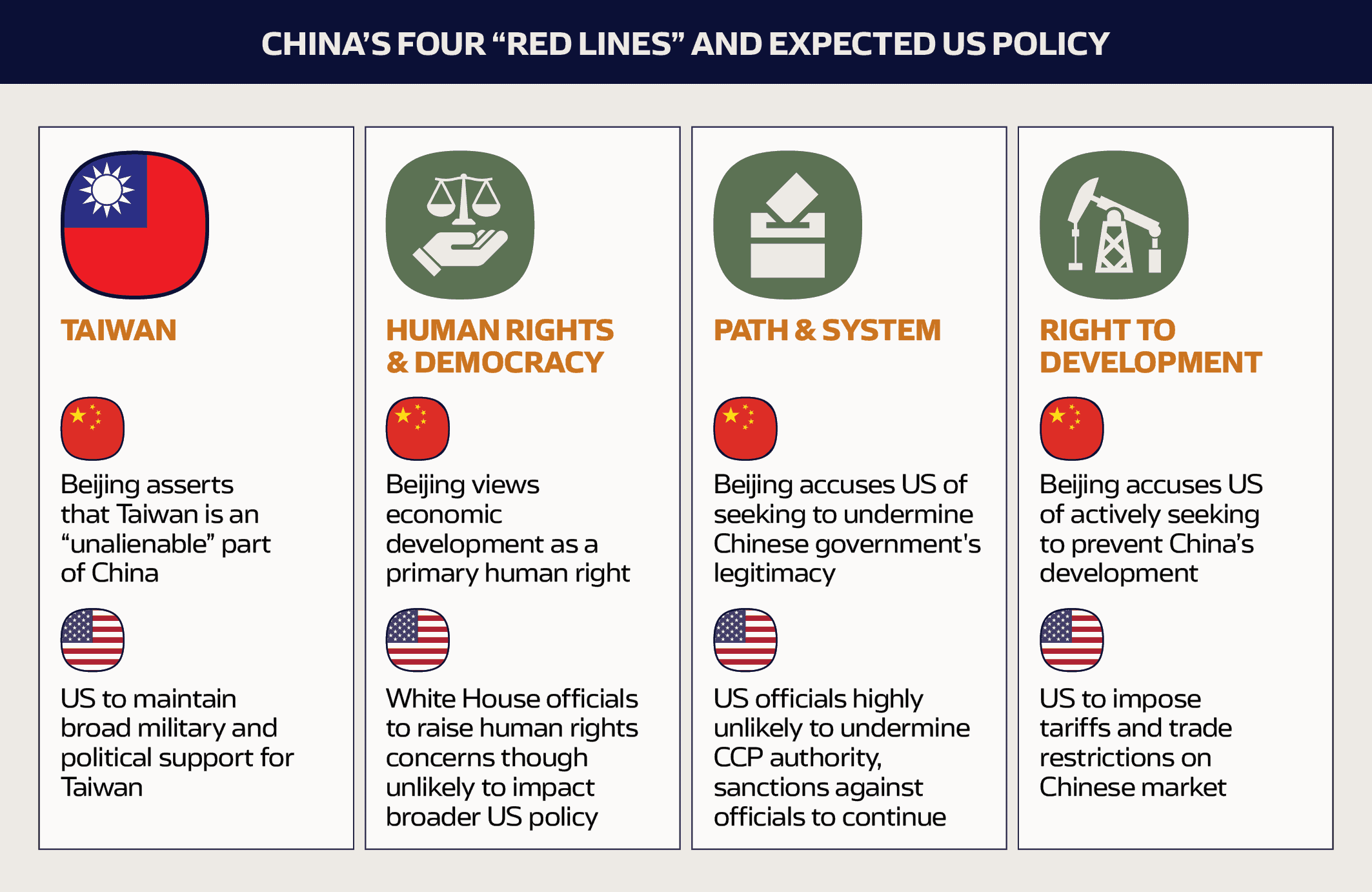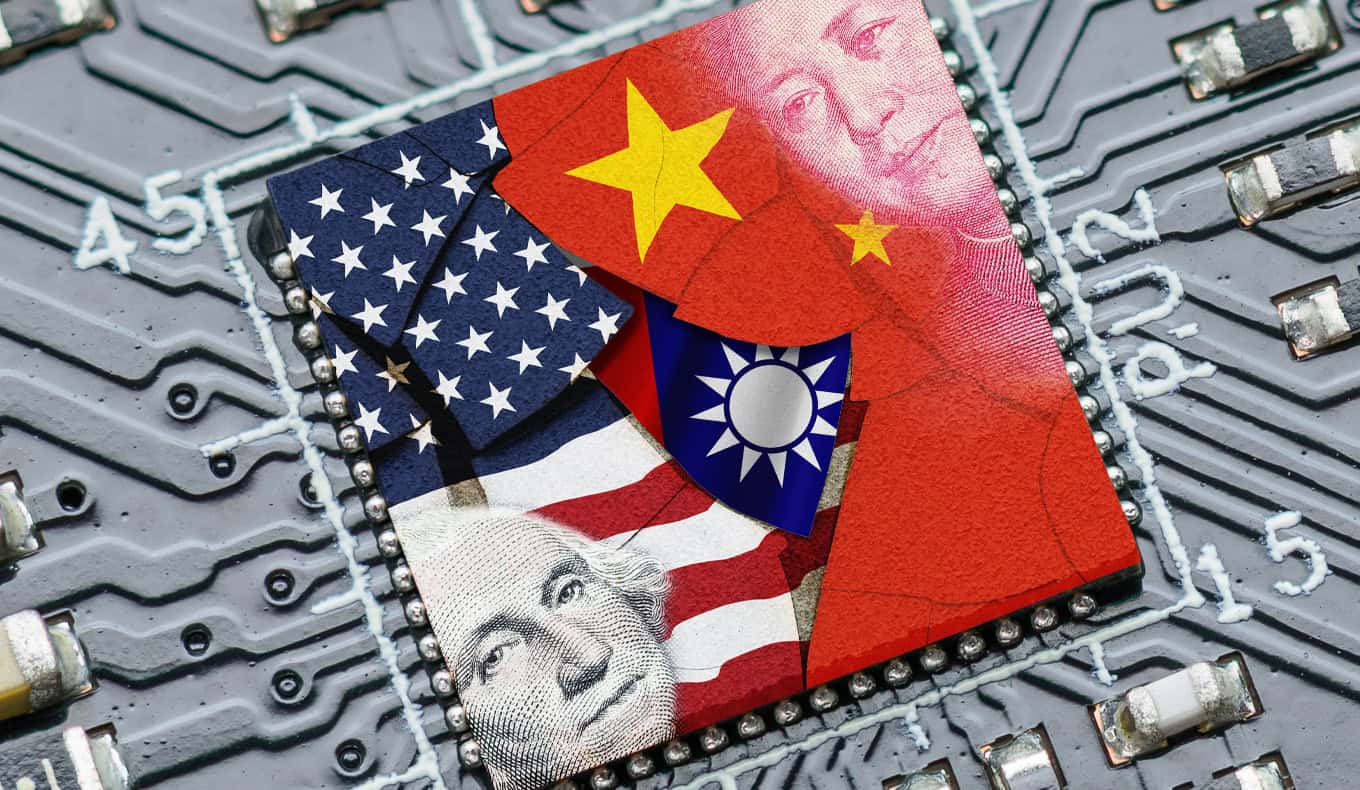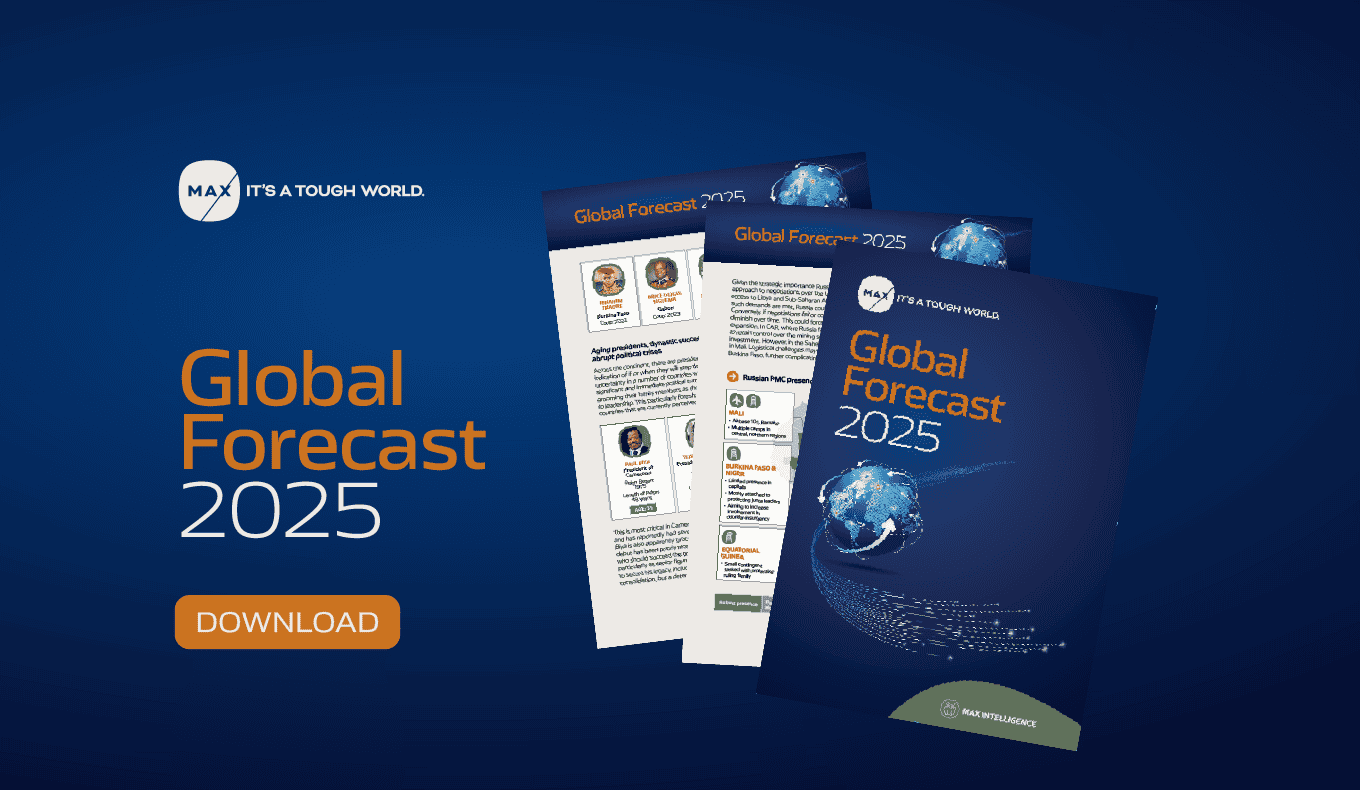2025 will be characterized by increased strategic competition between China and the US, particularly in critical technologies, military, and trade. Considering China’s recent publicization of its four “red lines,” which include protecting Beijing’s “right to development,” such competition is anticipated to underpin significant tensions in bilateral ties. The publication of the red lines following a meeting between Chinese President Xi Jinping and US President Joe Biden on November 16 was likely directed as a warning to the incoming Trump administration. However, Beijing’s warnings are not expected to be heeded by Washington with many of President-elect Trump’s senior foreign and defense appointees considered to be China hawks, although direct military interactions remain unlikely.

The coming period is expected to see an intensification in bilateral trade and technology restrictions, including US-imposed curbs on semiconductor imports from China, moves to restrict Chinese access to advanced artificial intelligence (AI) software, and restrictions on software with potential military uses. Washington is also expected to reimpose tariffs exceeding 60 percent on direct Chinese exports to the US, further straining bilateral ties. Beijing can be expected to respond by seeking to limit Washington’s access to critical minerals such as gallium, germanium, graphite, and antimony, as well as tightening regulatory controls on exports to the US, sustaining a tit-for-tat trade war between Beijing and Washington.
These trade frictions will likely exacerbate pressure on China’s faltering domestic economy, where poor consumption and low investment capacity will moderate the intensity of Beijing’s retaliation as reduced export revenues from trade measures are expected to weigh on China’s GDP. This is evident in estimates of China’s growth, which is forecast to slow down to approximately 4.5 percent in 2025. Domestic imperatives of boosting the economy are anticipated to engender measures that encourage foreign investment in the country, as well as domestic moves like monetary easing to prevent civil unrest, as seen during COVID-19-related restrictions. In this context, while the US will frame the imposition of restrictions against China as intended to pressure Beijing into agreeing to a broad trade deal, the latter is liable to interpret the moves as aimed at stifling Beijing’s economic development, thereby violating one of its red lines and necessitating a strong response.
In terms of geopolitical conflict, the Indo-Pacific region will be the focal point of China-US relations amid perceptions in both Beijing and Washington that control of the region, most prominently the Taiwan Strait, is pivotal to their respective ambitions. However, a Chinese invasion of Taiwan is not expected in the coming term, given a combination of factors including China’s military tactical unreadiness for such an endeavor, certain disarray in the military’s upper echelons given an ongoing purge on corruption charges, and the need to focus on domestic economic challenges. Nonetheless, the Taiwan Strait is expected to produce bilateral friction between Beijing and Washington. This will largely stem from China’s desire to maintain political, economic, and military pressure on the island in response to Taiwan President Lai Ching-te (William Lai)’s perceived pro-independence leanings.
Based on precedent, this will manifest in near-daily incursions over Taiwan’s aerial defense identification zone, as well as naval exercises around the island, potentially simulating a blockade of the island. Such actions are expected to be diplomatically opposed by Washington, which is legally bound to assist in Taiwan’s defense, though Washington maintains a policy of strategic ambiguity regarding the nature of this defense. While Trump will likely back the defense of Taiwan in 2025, including the provision of military aid to the island, statements made by him regarding Taipei’s need to pay a higher price for Washington’s protection will raise doubts in Beijing and Taipei regarding the US’ resolve to defend Taiwan. In any case, bilateral tensions over the Taiwan Strait are expected to be handled through diplomatic channels, given Trump’s stated opposition to the US’ involvement in perceived foreign conflicts.
Another potential flashpoint will continue to be the South China Sea (SCS), where China has shifted to a more assertive military posture since Trump’s first term. Chinese tactics in the SCS since 2023 include blockading, ramming of naval vessels, the use of water cannons, military-grade laser beams, and bladed weapons, coupled with greater enforcement of its 2021 law authorizing the detention of “foreign vessels that illegally enter China’s territorial waters.” On the US side, top Republican officials tapped for foreign policy roles such as Marco Rubio have labeled the Philippines as a “frontline ally,” highlighting the country’s importance in countering China’s assertiveness in the SCS. Washington’s plans to bolster missile infrastructure in the region, including in northern Luzon, Philippines, and on Japan’s Okinawa Island, where the US is building the new Henoko military base. This will lead to China intensifying its assertive stance, elevating the risk of sporadic naval clashes with other regional claimants such as the Philippines, with whom the US has a mutual defense treaty. While not anticipated to lead to direct China-US naval confrontations, Washington can be expected to seek to deter Beijing by bolstering its regional alliances including the Quadrilateral Security Dialogue (Quad) involving Australia, India, and Japan; the AUKUS alliance with Australia and the UK; and its informal trilateral alliance involving Japan and the Philippines.
While the US-South Korea alliance will persist, President Yoon Suk Yeol’s probable replacement amid his ongoing impeachment process, opposition Democratic Party (DP) leader Lee Jae-myung, will drive friction in Seoul’s relations with Washington. This is largely due to Lee’s likely resistance to Trump’s demands that Seoul take greater financial responsibility for its defense. However, a Lee presidency, coupled with a potential DP parliamentary majority, would increase Trump’s prospects of greater diplomatic engagement with Pyongyang, which would be supported by the DP, given that the party has a history of seeking reconciliation and unification with the North.
Despite the various areas of tension, China and the US are still expected to maintain a certain level of cooperation, particularly in fields such as climate change, public health, and mitigating the production and trafficking of narcotics like fentanyl. Amid this, diplomatic engagements between Chinese and US leaders are anticipated to persist, even during periods of bilateral turbulence. This can be seen in Trump’s reported invite to President Xi for his inauguration. While Xi is not expected to attend, the invitation nonetheless represents the mutual preference for sustaining high-level diplomatic engagement. Additionally, efforts to establish military communication channels initiated by outgoing US President Biden, and held as recently as September, will likely be sustained. However, such initiatives will remain fragile, with both sides liable to threaten withdrawal from the dialogue as a pressure tactic during periods of tensions. Overall, while these areas of collaboration reflect a mutual recognition of shared interests, they are not anticipated to extend into broader strategic agreements given the underlying tensions between the two powers.















